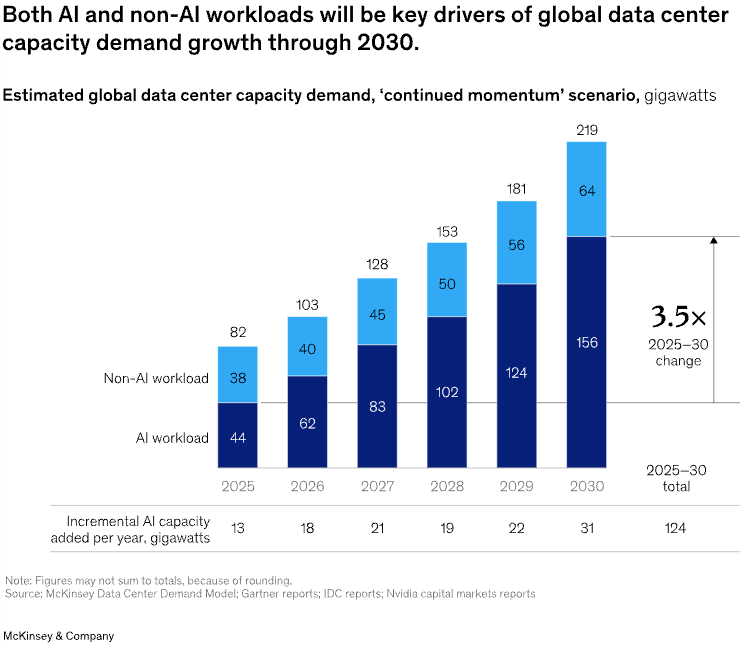Fluence Vision 2026: Tokenizing Compute to Meet AI’s Exponential Demand

Enterprises, developers, and Web3 communities are facing a critical junction. The AI and intelligence economy demands compute infrastructure that is decentralized, scalable, and trustworthy.
Fluence Vision 2026 responds with a detailed plan to scale its enterprise-grade decentralized compute platform, using RWA-tokenized compute (FLT) to meet rising global demand. Fluence, the enterprise-grade decentralized compute platform, is proud to unveil its Vision 2026—alongside its four major new initiatives that begin from June 1st.
This article examines Fluence’s strategy across hardware tokenization, Tier IV infrastructure, community-led security, and targeted growth programs.
Current Highlights & Trajectory

To date, Fluence has achieved meaningful early momentum:
- Revenue: The platform is live and generating millions in annualized revenue to providers.
- TVL: More than 25 million FLT are currently staked to secure the network.
- Cloud Costs Saved: Fluence customers have saved over $4 million compared to traditional cloud providers.
- Tier IV Infrastructure: Fluence’s global enterprise-grade compute is sourced from top-tier data centers already serving major Web2 companies.
Fluence is actively addressing a multi-million-dollar pipeline of third-party node providers while capturing opportunity in the $1B+ blockchain and dApp infrastructure market.
Unveiling Fluence Vision 2026
Fluence is scaling to meet the rising pressure of the Intelligence Economy—where AI development, infrastructure security, and economic coordination are all compute-dependent.
Over the next 18 months, Fluence will grow its platform across three core dimensions:
- Turning real-world compute into a tokenized asset with aligned incentives,
- Delivering enterprise-grade infrastructure that adapts to the speed of AI innovation, and
- Building a decentralized security layer capable of withstanding geopolitical and technical threats.
Together, these pillars define Fluence’s approach to building a more accessible, resilient, and economically integrated compute foundation for the AI era.
1. The Rise of Fluence: A RWA-Tokenized Compute Platform and Its Thriving Community
One of the most underappreciated aspects of AI is the demand growth of physical compute infrastructure, evident in the recent $500B investment to build Project Stargate by OpenAI, Oracle, and Softbank.
Fluence’s vision sets out how it plans to scale its compute platform by expanding its service offerings, growing its compute power, and meeting AI’s accelerating global demand.
Powered by an open, cost-efficient, and resilient network, FLT allows holders to:
- Participate in the ecosystem,
- Earn rewards, and
- Gain exposure to the increasing economic value of compute.
Together, these features position FLT as a practical gateway to real-world infrastructure value in the rapidly growing AI economy.
2. Scaling and Adapting: Fluence as the Evolving Compute Backbone for the Intelligence Economy

The rapid progress of AI has triggered unprecedented demand for high-performance distributed compute. Traditional cloud platforms—concentrated around a handful of hyperscalers—introduce friction: high costs, limited access, resilience issues, and opaque governance.
Fluence responds by building a decentralized compute platform that meets enterprise-grade reliability while benefiting from the decentralization of physical infrastructure networks (DePIN). Tier IV data centers with 99.995% uptime and verified performance form the bedrock of this architecture. The model welcomes hardware operators globally, validated through on-chain attestations and real-time telemetry.
Developers and AI-native startups can provision compute for large-scale tasks through a streamlined interface—without needing to negotiate with centralized vendors.
3. Securing and Powering Web3: Fluence as the Resilient Infrastructure Layer for a Decentralized Future
As political instability and AI sophistication increase, so does the threat from bad actor nation-states and coordinated cyberattacks on centralized infrastructure. This creates an urgent need for decentralized compute systems to underpin essential services—from AI applications to financial and civic infrastructure.
Fluence applies a decentralized validation model through Guardians—independent monitors who ensure the network operates correctly using telemetry and on-chain data.
Key aspects include:
- Ongoing Monitoring: Guardians detect anomalies and reliability issues in real time.
- Incentive and Accountability: Bad actors risk losing staked FLT.
- Openness: Anyone can become a Guardian, contributing to platform integrity.
This approach creates a decentralized monitoring layer that replaces centralized trust with distributed resilience—backed by a global community.
Four Programs to Drive Adoption (Starting June 1st)
To accelerate adoption, Fluence launches four initiatives:
Guardians Initiative
A global coordination layer where participants run lightweight nodes—often on mobile devices—to help observe and scale the network.
- Secure and protect the platform via community monitoring
- Earn passive income through FLT incentives
- Access free compute for select personal or business needs
Decentralized monitoring as a service, powered by everyday devices.
Pointless Program
The Pointless Program is our initiative to incentivise the non-tech community members to contribute and help build the cloudless ecosystem.
Participants can earn points by engaging with the Fluence ecosystem through various on-chain and community-driven activities. Point accumulation is tied to wallet activity and tracked in real time, with opportunities to accelerate earnings through special campaigns and milestones.
Token Buyback Program
A deflationary model funded by actual protocol revenue.
- Revenue from usage funds open-market FLT repurchases
- Strengthens tokenomics with verifiable SaaS-based earnings
- Ties token demand directly to platform success
This program aligns long-term value with network adoption.
AI-Compute Functionality
Infrastructure upgrades that meet enterprise-grade AI needs.
- GPU support for ML training and inference
- SLAs to ensure availability and reliability
- APIs to empower developer orchestration
- Reinforced protection against state-level attacks on centralized clouds
Each program solves a specific adoption barrier—capacity supply, developer readiness, enterprise trust, and network safety—to enable sustained expansion.
Looking Ahead
Fluence Vision 2026 outlines an ambitious yet practical approach to scaling decentralized, enterprise-aligned compute for the exponential growth of the Intelligence Economy.
The combination of hardware-backed tokenization, global Tier IV infrastructure, community-powered validation, and adoption-focused programs positions Fluence to address the growing demands of AI and intelligent systems development.
Builders, developers, and enterprises willing to adopt decentralized compute now gain access to a model built on transparency, trust, and performance.

